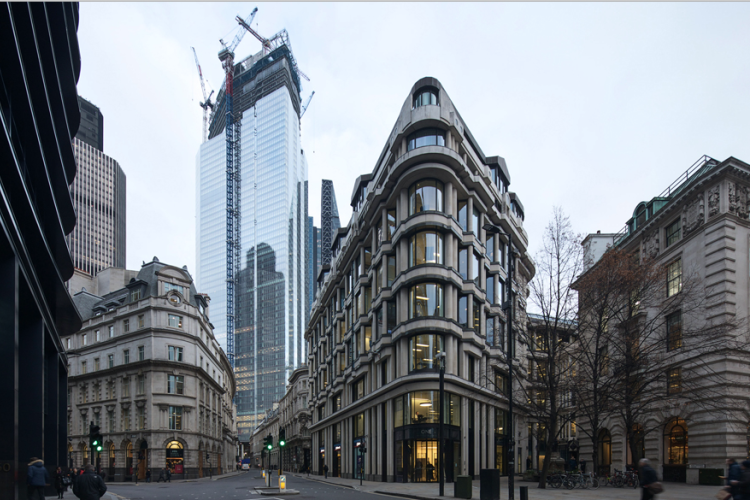The development comes with a flourish of superlatives: it will be the tallest tower in the financial district; it will be serviced by what are promised to be the fastest lifts in Europe; and the 57th floor will be home to the highest public viewing platform in western Europe.
Standing at 278m tall, the building will provide 118,000m2 of flexible workspace for all sizes of businesses and will house 12,000 workers, a gym, indoor market, cycle storage hub, art gallery and social spaces.
Yet this achievement will be all the more remarkable for having been built upon the remains of the previously stalled Pinnacle scheme.
22 Bishopsgate incorporates the below-ground elements of its predecessor, including three floors of basement and a raft slab supported on piled foundations. Reusing all the existing piles, which were not in the optimum positions for the new structure, meant introducing transfer structures at basement level and level two to support columns that do not have a pile directly below them.
From ground level upwards it is a steel-framed structure surrounding a large central core, with minimal internal columns ensuring long clear spans of up to 17m. Severfield was contracted to provide the connection design and then fabricate and construct the steelwork on site. According to main contractor Multiplex: “The final building will contain 17,023 tonnes of steelwork, made up of 14,593 individual pieces of steel.”
Designed by PLP Architecture for AXA IM-Real Assets and Lipton Rogers, 22 Bishopsgate presented challenges both in design and delivery. The design required superelevations and axial shortenings, and posed complex geometrical questions, particularly at the two double-height outrigger truss floor levels. Delivery was restricted to two access points: one shared pit lane on Bishopsgate and the out-of-hours use of the undershaft between 22 Bishopsgate and 122 Leadenhall.

“The floor slabs are composite with cellular steel beams, providing a diaphragm-action restraint to the perimeter columns,” says PLP. “There are three column positions on either side of the core to act as outrigger lateral stability structures. These outriggers, contained within two plant room floors, are connected to the core through storey-deep trusses.”
The basement level transfer structure supports one column that extends up to the full height of the building. The transfer structure is a 15m-long plate girder weighing approximately 97 tonnes. Meanwhile, the level two transfer structure is another giant steel member that also transfers loads from perimeter columns. This plate girder weighs more than 100 tonnes and is 14m long.
To preserve an existing access route to the basement loading bay Severfield designed, fabricated and erected a structure nicknamed the ‘Rhino’ truss because of its shape. This truss weighs around 150 tonnes and is composed of site-bolted booms, nodes and diagonals, with the heaviest node weighing approximately 20 tonnes. Two tower cranes were required to install it.
This article was first published in the September 2019 issue of The Construction Index magazine (magazine published online, 25th of each month.)
UK readers can have their own copy of the magazine, in real paper, posted through their letterbox each month by taking out an annual subscription for just £50 a year. Click for details.
Got a story? Email news@theconstructionindex.co.uk



